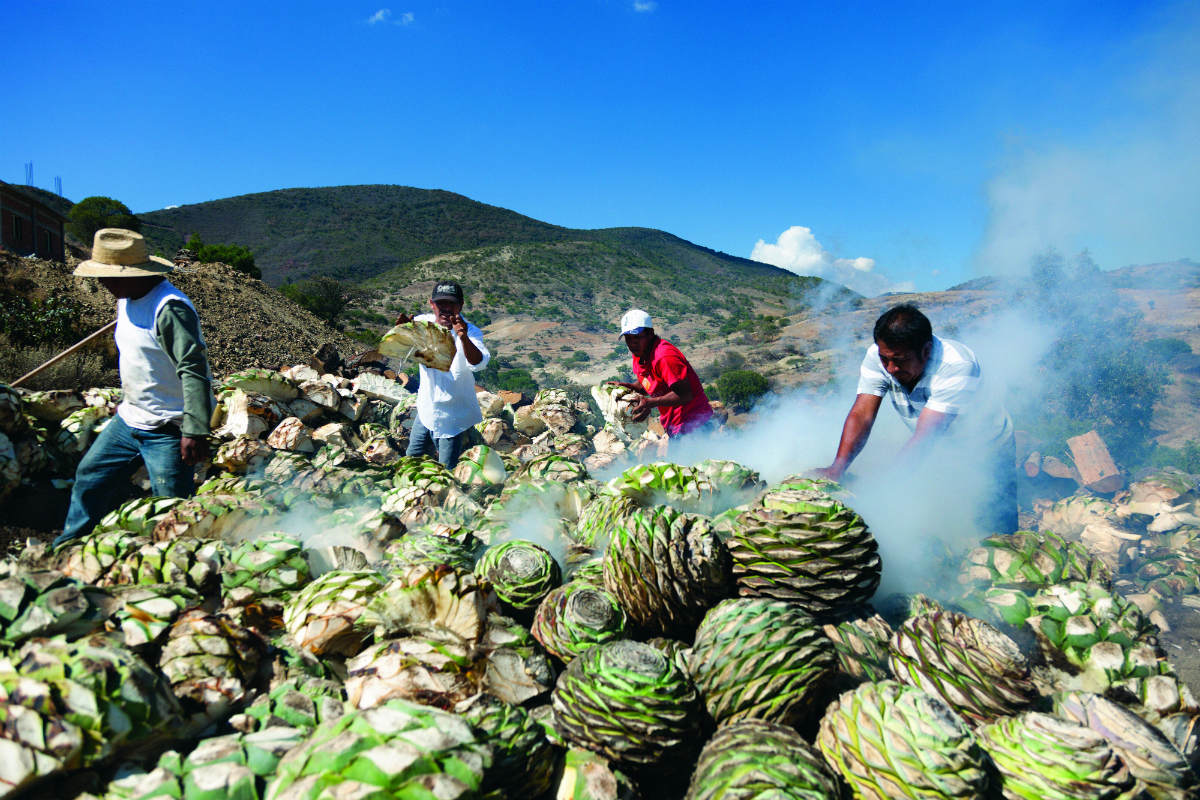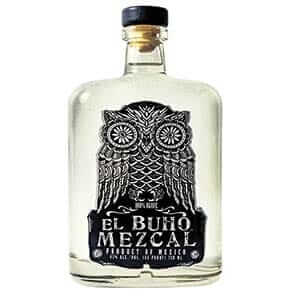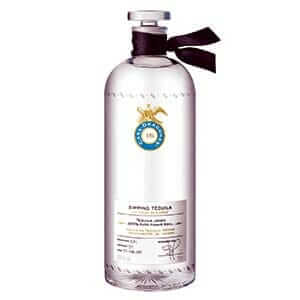Top Shelf: Mexican Booze Steps Up
Just a decade ago, small-batch Mexican liquor had what you might call a “limited global presence.” But now restaurants from Beijing to Copenhagen stock hundreds of small-batch tequilas and mezcals.
Top Shelf: Mexican Booze Steps Up
Just a decade ago, small-batch Mexican liquor had what you might call a “limited global presence.” But now restaurants from Beijing to Copenhagen stock hundreds of small-batch tequilas and mezcals.

Just a decade ago, small-batch Mexican liquor had what you might call a “limited global presence” – especially in restaurants. At most places outside Mexico, tequila was just the base booze for your syrupy margarita; high rollers could order PatrÁ³n. But mezcal? Never heard of it.
Now restaurants from Beijing to Copenhagen stock hundreds of small-batch tequilas and mezcals. “Mezcalerias” like La Urbana in San Francisco pair obscure mezcals with high-concept riffs on Mexican food – think seared snapper with corn foam and a purée of huitlacoche (corn fungus, a delicacy). Margaritas are still a thing, but even more so is “sipping tequila,” served neat to set off the flavors of your food.
After the agave plants have been harvested, the remains are ground into a fibrous pulp called bagazo that will be heated and used in the mezcal-making process. A worker removes hot bagazo from a furnace.
Piles of piña, the pineapple-like hearts of the agave plant, are stacked by a roasting pit, where they will be placed on a bed of hot rocks and hardwood coals.
A mound of bagazo, which will be layered on top of the hot rocks to ensure the piñas don’t burn.
“Mezcal and tequila are our wine,” says Alex Stupak, chef at the modernist Mexican restaurant Empellón Cocina in Manhattan.
Since Rick Bayless opened Chicago’s Frontera Grill in 1987, upmarket Mexican food has adopted some swagger. These days, diners of means can get lobster in their queso fundido, wagyu beef tartare in their tacos. Some Mexican menus name-check their farm sources; others list their chefs’ fine-dining credentials.
So, naturally, you’re going to want some impressive spirits with your meal.
Around the world, tequila sales have been on the upswing for years. In the last decade, annual global sales have grown to $2.2 billion; the U.S. alone imports 13 million cases per year. Frat favorite Jose Cuervo still dominates the market, but small-batch sipping tequilas are now finding a niche alongside artisan gins and bourbons. High-end entrants like Casa Dragones ($275 a bottle) and the Sean Combs”“backed DeLeÁ³n ($120 to $1,000 per bottle) have a new cachet, at least among a certain subset of consumers.
“Ever since the recession ended, there’s been increased demand for handcrafted, small-batch everything,” says Kara Nielsen, culinary trend analyst, who notes that the prominent placement of high-end tequila on HBO’s “Entourage” certainly helped pique interest.
Workers cover the roasting pit.
Alejandro Champion, director of Mezcal UniÁ³n, and friends partake of his product while out on a stroll in the mountains.
A large stone wheel is used to grind the cooked agave hearts into a pulp that will then be mixed with water and aged in fermentation barrels.
 El Buho Mezca: Roasted over mesquite for a week. $30, drinkupny.com
El Buho Mezca: Roasted over mesquite for a week. $30, drinkupny.com Del Maguey Pechuga: Flavored with wild mountain apples and plums. $200, binnys.com
Del Maguey Pechuga: Flavored with wild mountain apples and plums. $200, binnys.com Casa Dragones:
Casa Dragones:Made in small batches and multiple-distilled for a clean taste. $270, binnys.com
The clamor for tequila’s smoky cousin may be more recent, but it’s catching up fast. Global mezcal exports grew over 50 percent between 2009 and 2011. Unlike tequila, which is always made with blue agave, mezcal can be made from at least a dozen different agave varieties, each with its own terroir. Mezcal’s agave mash is further enhanced through distillation in clay or copper pots, using local techniques passed down for hundreds of years (see sidebar pg. 39). Some mezcal is sold right after distillation, while some is barrel-aged for up to a year (one company makes a rare, seven-year mezcal). Also, while tequila’s blue agave is frequently grown in large industrial operations, other agaves are often harvested from the wild. Camper English, a Bay Area cocktail writer, says that’s the core of mezcal’s charm.
“There’s almost a rebellion against tequila, like it’s part of some big industrial machine,” he says. “Mezcal is as smallbatch as you can get; when you tell people their agave was hand-harvested from like, this one obscure hillside, they go nuts.”
Of course, you can’t discuss mezcal without mentioning its singular feature: a deep, robust smokiness, paralleled only by Scotch whisky. It typically acquires this flavor from roasting agave a few days in a pit oven, essentially an earthen mound over pits of hot rocks. It’s a process that ramps up mezcal’s flavor – as well as its artisan appeal.
Those unfamiliar with Mexican spirits may discover layers of complexity in both tequila and mezcal. Stupak, who admits he favors mezcal over tequila, pairs these liquors with food that may seem unfamiliar – say, manila clams in a tripe stew, or sea urchin mousse served with thick corn masa. Stupak suggests you savor every drop.
“In the U.S., you pour someone a tequila, they tend to chug it like a shot,” he says. “In Mexico, you’re going to sip it slowly with your meal. People here are just getting used to this idea.”
How Mezcal Got Big, Yet Stayed Small
Mezcal is having a moment, but the economics of its small-batch production mean that its growth is not all that it could be.
Over the last five years, mezcal exports have more than doubled. During the same period, within Mexico, the number of bars, restaurants and stores selling mezcal increased more than sixfold.
Despite these encouraging numbers, some experts worry the boom benefits just a few large labels. Mezcal is traditional to Oaxaca, one of Mexico’s poorest states, where many speak the indigenous lan- guage Zapotec and have limited Spanish skills. Many have no cell phone service and some lack direct access to roads.
Currently, there are about 25 brands of mezcal available for retail sale in New York, a fraction of the total number of family-run distilleries in Oaxaca. After all, aficionados value the flavors produced by traditional production.
They don’t have advisors to tell them what their product is worth. They could earn a lot more,” says Alejandro Champion, co-owner of the Mezcal UniÁ³n brand, currently sold in Mexico and New York.
Many local makers sell roadside bottles for $3, while premium brands sell for $25 to $80 at boutique stores.
The new economics of mezcal and tequila, favoring small operations, mean that upscale bars and restaurants stock huge varieties of the stuff. On EmpellÁ³n’s liquor shelf, you’ll find 50 different strains of mezcal, and over 90 tequilas. Cantina Agave, a Beijing restaurant offering lengua chimichangas and pasilla tortilla soup, offers over 100 different bottles of tequila. And when the nouveau-Mexican spot La Urbana opened this fall in San Francisco, it had over 50 mezcals; it has since added dozens more.
These restaurants are helping build interest in high-end Mexican spirits, but it’s a slow progression. According to Nielsen’s statistics, bottles of tequila valued at more than $60 still only make up 0.6 percent of the U.S. market. Mezcal had a record year of exports in 2011 (the last year with available data), shipping 72,000 cases around the world; for comparison, Scotch whisky exports topped 92 million cases that same year. Even if mezcal exports have grown tenfold in the last two years, they still only make up a wee slice of the small-batch spirits pie.
Still, every movement starts somewhere. Demand for artisanal tequila and mezcal increases every year, as does the proliferation of high-end Mexican restaurants. And trend forecaster Nielsen sees this as merely the beginning. “Once people have tasted something better, it’s not like they’ll go back to garbage tequila,” she says. “Lucky for us.”
Follow us
This work is licensed under a Creative Commons Attribution-NoDerivatives 4.0 International License.
Want to republish a Modern Farmer story?
We are happy for Modern Farmer stories to be shared, and encourage you to republish our articles for your audience. When doing so, we ask that you follow these guidelines:
Please credit us and our writers
For the author byline, please use “Author Name, Modern Farmer.” At the top of our stories, if on the web, please include this text and link: “This story was originally published by Modern Farmer.”
Please make sure to include a link back to either our home page or the article URL.
At the bottom of the story, please include the following text:
“Modern Farmer is a nonprofit initiative dedicated to raising awareness and catalyzing action at the intersection of food, agriculture, and society. Read more at <link>Modern Farmer</link>.”
Use our widget
We’d like to be able to track our stories, so we ask that if you republish our content, you do so using our widget (located on the left hand side of the article). The HTML code has a built-in tracker that tells us the data and domain where the story was published, as well as view counts.
Check the image requirements
It’s your responsibility to confirm you're licensed to republish images in our articles. Some images, such as those from commercial providers, don't allow their images to be republished without permission or payment. Copyright terms are generally listed in the image caption and attribution. You are welcome to omit our images or substitute with your own. Charts and interactive graphics follow the same rules.
Don’t change too much. Or, ask us first.
Articles must be republished in their entirety. It’s okay to change references to time (“today” to “yesterday”) or location (“Iowa City, IA” to “here”). But please keep everything else the same.
If you feel strongly that a more material edit needs to be made, get in touch with us at [email protected]. We’re happy to discuss it with the original author, but we must have prior approval for changes before publication.
Special cases
Extracts. You may run the first few lines or paragraphs of the article and then say: “Read the full article at Modern Farmer” with a link back to the original article.
Quotes. You may quote authors provided you include a link back to the article URL.
Translations. These require writer approval. To inquire about translation of a Modern Farmer article, contact us at [email protected]
Signed consent / copyright release forms. These are not required, provided you are following these guidelines.
Print. Articles can be republished in print under these same rules, with the exception that you do not need to include the links.
Tag us
When sharing the story on social media, please tag us using the following: - Twitter (@ModFarm) - Facebook (@ModernFarmerMedia) - Instagram (@modfarm)
Use our content respectfully
Modern Farmer is a nonprofit and as such we share our content for free and in good faith in order to reach new audiences. Respectfully,
No selling ads against our stories. It’s okay to put our stories on pages with ads.
Don’t republish our material wholesale, or automatically; you need to select stories to be republished individually.
You have no rights to sell, license, syndicate, or otherwise represent yourself as the authorized owner of our material to any third parties. This means that you cannot actively publish or submit our work for syndication to third party platforms or apps like Apple News or Google News. We understand that publishers cannot fully control when certain third parties automatically summarize or crawl content from publishers’ own sites.
Keep in touch
We want to hear from you if you love Modern Farmer content, have a collaboration idea, or anything else to share. As a nonprofit outlet, we work in service of our community and are always open to comments, feedback, and ideas. Contact us at [email protected].by Jesse Hirsch, Modern Farmer
May 1, 2014
Modern Farmer Weekly
Solutions Hub
Innovations, ideas and inspiration. Actionable solutions for a resilient food system.
ExploreExplore other topics
Share With Us
We want to hear from Modern Farmer readers who have thoughtful commentary, actionable solutions, or helpful ideas to share.
SubmitNecessary cookies are absolutely essential for the website to function properly. This category only includes cookies that ensures basic functionalities and security features of the website. These cookies do not store any personal information.
Any cookies that may not be particularly necessary for the website to function and are used specifically to collect user personal data via analytics, ads, other embedded contents are termed as non-necessary cookies.